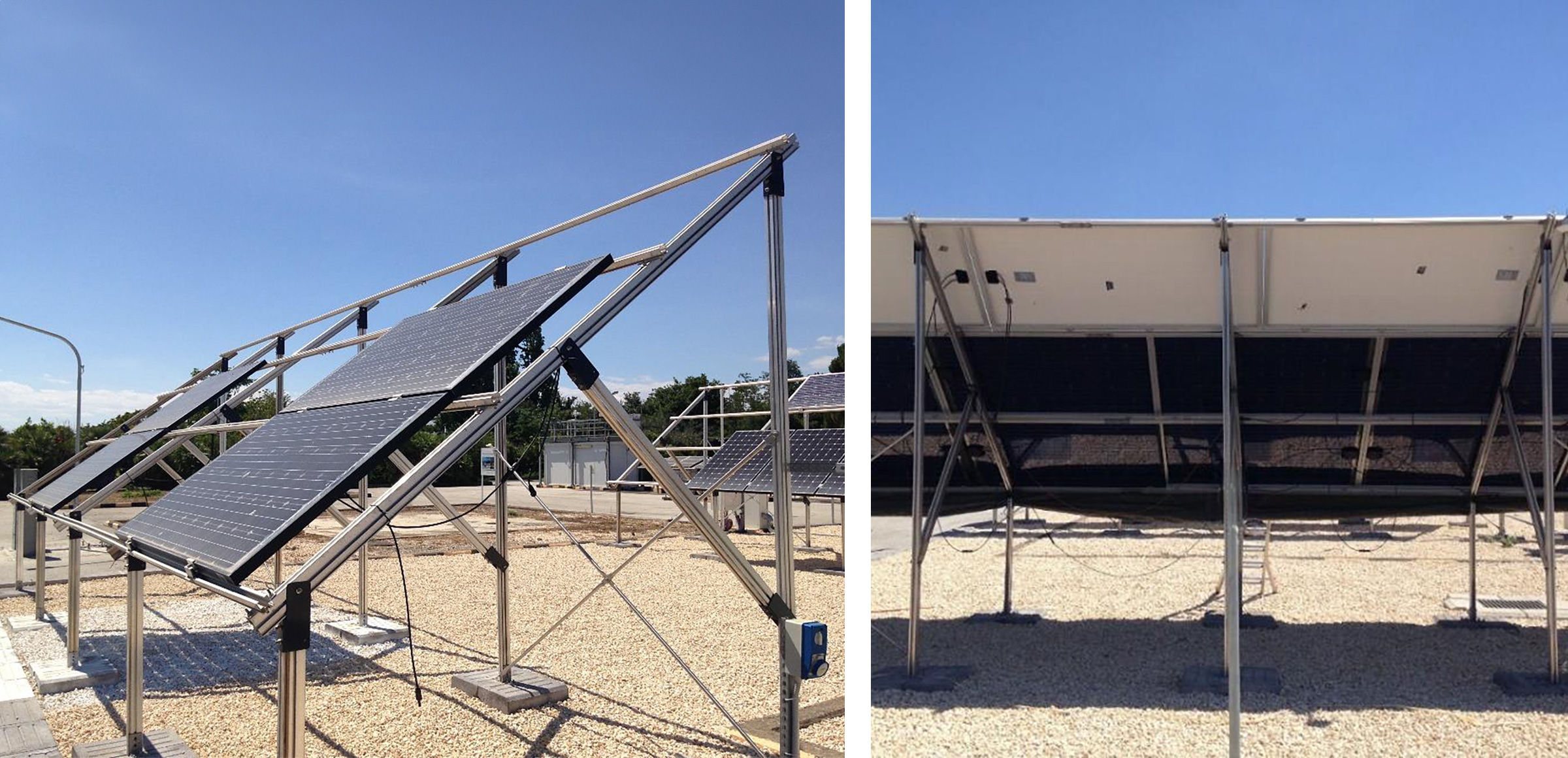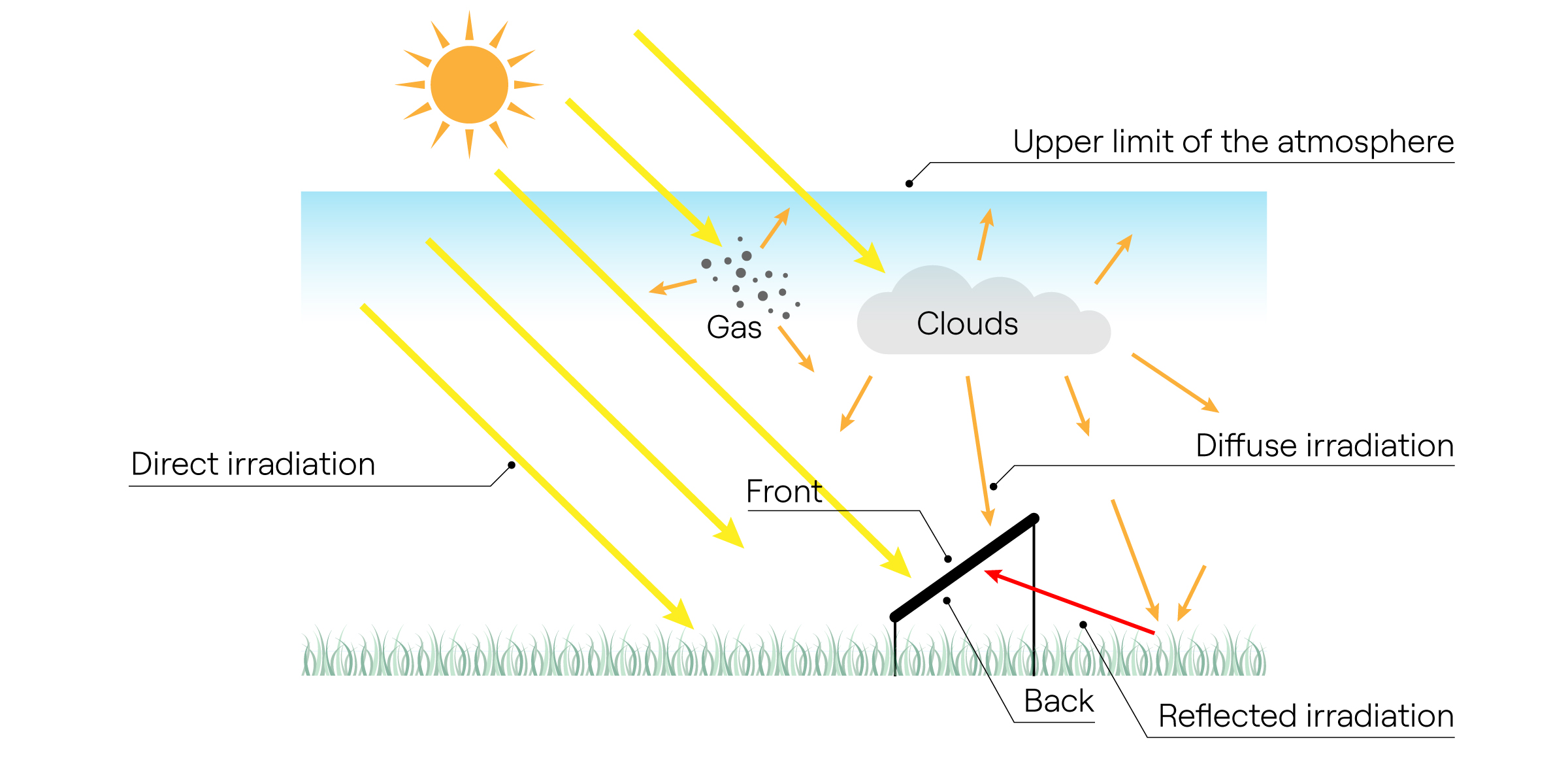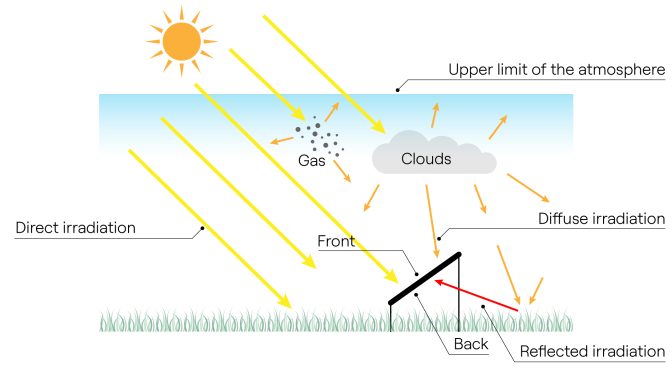
Photovoltaic systems are increasingly using bifacial modules that allow sunlight to be harnessed on both the front and back sides of the module, collecting not only direct radiation but also reflected radiation from the ground, thus increasing electricity production.
Among the parameters that determine the performance of photovoltaic panels – such as the location of the system, the layout (i.e., the arrangement of panels and rows) and the height above the ground – is albedo, or the percentage of solar radiation reflected from the ground.
Therefore, to optimize PV operation and take full advantage of technological innovation, it’s also necessary to increase the albedo as much as possible, so that the back of the module can also absorb as much energy as possible.
Albedo and its role in the development of renewables
The albedo is basically the reflective power of a surface, and is usually expressed as a fraction or percentage: a perfectly reflective body would have an albedo equal to 1 (100% reflection), while a perfectly absorbent one, which doesn’t reflect any light at all, has an albedo of zero. Thus a ground albedo of 10% means that if the solar radiation received by the ground is 1 kilowatt, the amount reflected is 100 watts.
The magnitude of albedo is determined by several factors that are characteristic of the surface to which it relates: color, first of all, but also texture, irregularities, and the presence of dust or water.
To date, the natural albedo of soil in solar installations is between 10% and 30%, in line with that of vegetation cover. Under certain conditions, however, this value can vary to a greater or lesser extent: for example, in the case of snow cover it can be as high as 50%, while a certain variability also results between plowed or rainfall-compacted soil, and also depends on the inclination of the sun’s rays and on weather conditions.
The albedo of water, on the other hand, is close to zero, so in the case of floating solar panels that are being deployed to partially cover ponds and small reservoirs – with the side benefit of reducing evaporation and conserving water resources – the use of bifacial modules is ill-suited.
How to improve the reflective power of soil
At Enel Green Power, we operate more than 1,200 renewable power plants worldwide, and optimizing land use and energy efficiency are key conditions for achieving sustainability goals. So we take the opportunity to deploy bifacial modules wherever possible and convenient, since they can enable productivity gains of up to 10% over conventional modules.
The design of our systems takes into account the albedo of the soil: even though it is a specific characteristic of a particular soil, the radiation captured by the back ofthe bifacial modules can be improved.

Therefore, it’s necessary to evaluate and determine the optimum distance between module rows and carefully analyze the ‘solar geometry’ (i.e., the inclination of the sun’s rays, which varies over time and with the seasons) according to the specifications of the panels. In fact, the energy efficiency of the modules is also influenced by the view factor, i.e., the module surface (front or back) that ‘sees’ the radiation source, whether it is the sun (direct), the sky (diffuse) or the ground (reflected).
To increase the albedo in photovoltaic systems, we’re also working on partial coverings for the ground under the systems: by purposefully arranging white tarps or light-colored stones, it is indeed possible to increase the reflective power of the surface.
The use of polypropylene geotextile sheets, which can greatly improve albedo without consuming the land or compromising its ability to absorb water, is also being tested. Further increasing the energy harvested by PV modules not only increases their efficiency, but also aids the energy transition by helping to reduce land consumption.


